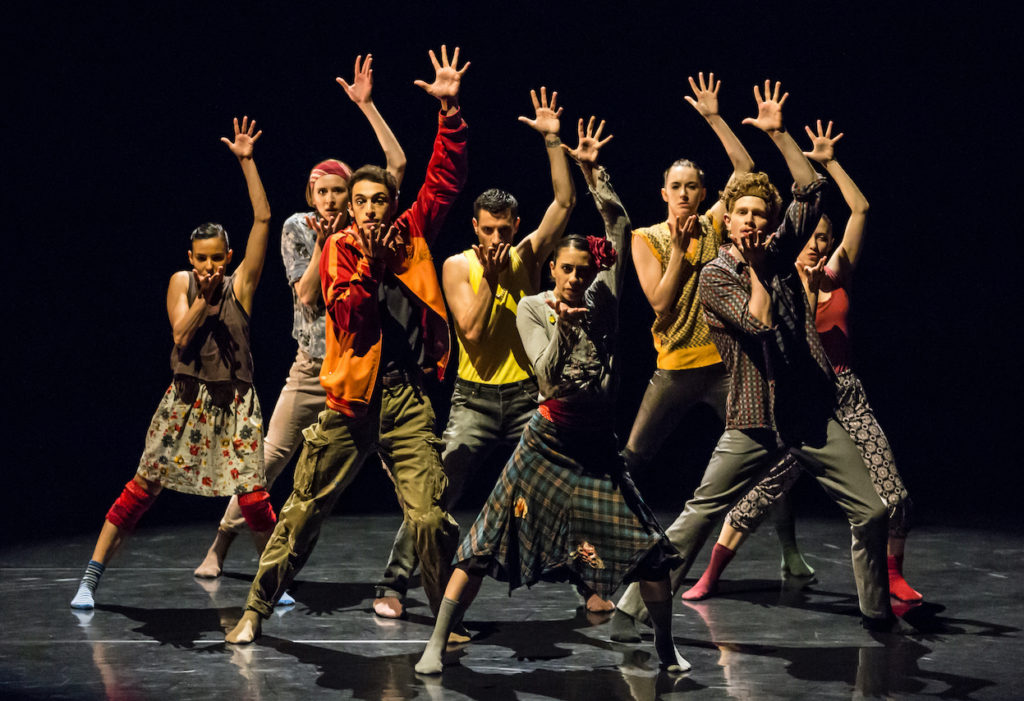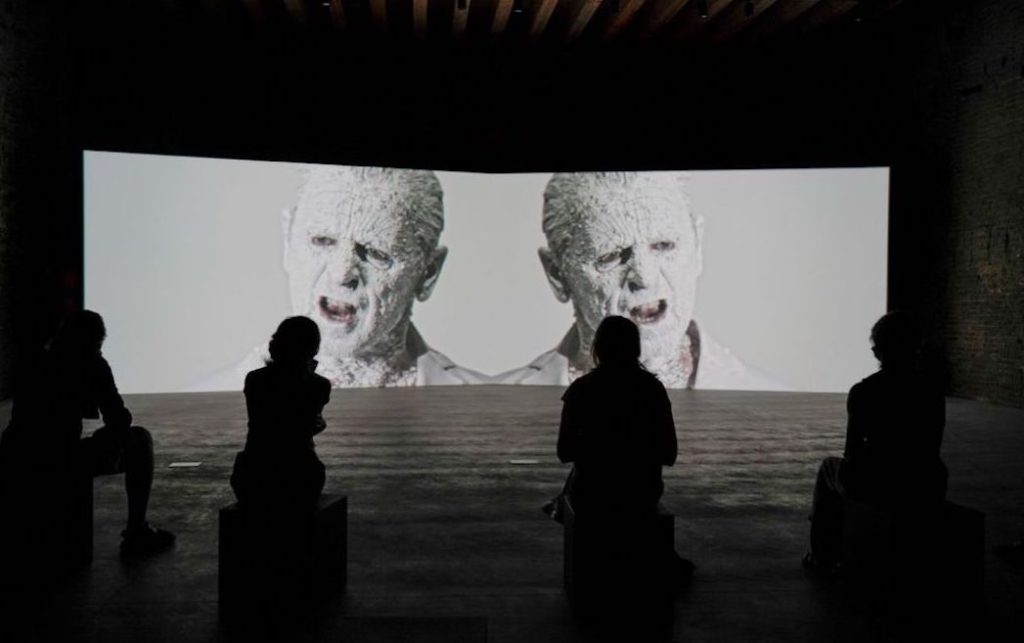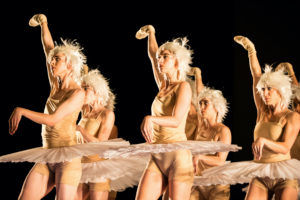Venice and Bolzano: The festival season, summer 2021 - Vancouver Ballet Society
- Home
- City Reports 2020 - 2023
- Venice and Bolzano: The festival season, summer 2021

By Silvia Poletti
The second Summer of COVID gave Italians the hope (or the illusion) of a return to a certain normality. After dark months bound to home TV or computer screens watching streaming events, at last, at the end of May, theatre doors cautiously opened to limited capacity audiences. By summer, which in Italy is a time of festivals offering international overviews on the latest trends in dance, capacity was still limited.
For BolzanoDanza, in July, artistic director Emanuele Masi chose the theme of the swan as the festival’s leitmotif. Under the umbrella title of Swans Never Die, Masi asked several dancemakers to rethink Fokine’s Dying Swan solo with reference to current events, which led to works referring to ecological disasters (by Spanish group Kor’sia, led by three Italian dancers) and to refugees (by Tunisian Radhouane El Meddeb).

Swans are iconic creatures of the dance world, which BolzanoDanza’s resident company, Gauthier Dance, had already revisited during the pandemic. In 2020, Gauthier invited four renowned choreographers to create pieces inspired by the traditional Swan Lake. The pandemic caused the premiere to be delayed until June 2021, so Italians attending BolzanoDanza had the chance to see Gauthier Dance’s Swan Lakes shortly after its debut in Stuttgart, where the company, founded and managed with flair by Canadian Eric Gauthier, is based.
Gauthier allowed total freedom of interpretation to the four he invited — Spanish Caetano Soto, German Marco Goecke, Israeli Hofesh Shechter, and Canadian Marie Chouinard — and, of course, given their artistic reputations, expectations were high. But there were problems: if the starting point is an archetypical monster like Swan Lake, new readings have to consider what the ballet represents and offer new insights.
The only one to succeed in opening up a new creativity was Chouinard, who, in Le chant du cygne: le lac used the swans’ iconic poses and steps, white tutus and pointe shoes (one worn on a hand, the other on a foot), to emphasize the unbalanced world these creatures are obliged to move in, always together. When they start to chant the anthem written by Chilean feminist art collective Las Tesis, Un violador en tu camino (A rapist in your path), who these swan girls really are is revealed: abused women, without freedom. Chouinard gives us a real vision of the human condition hidden in the ballet’s myth.
Chouinard is the only one to use several excerpts of the Tchaikovsky music, revisited by Louis Dufort. In the men’s pieces, which stray far from the subject of Swan Lake, the musical choices are obscure (electronic music for Shechter and Soto, songs from Björk for Goecke).
The best approach for an audience member was to simply enjoy the masterful stream of dynamics in the creation and disbanding of a group of young hipsters in Shechter’s Swan cake. Or to appreciate the opportunity to hear Goecke sing along to a Björk song that is the score of his frantic, cool Shara Nur. Or to admire the flow of Soto’s dynamics in an abstract choreographic composition, Untitled for 7 Dancers. But considering the starting point, are those things enough?

The overlapping schedules of BolzanoDanza and Venice Biennale Danza — the first under new director Wayne McGregor — was not the only complication for audiences travelling between the two cities. The other, more serious, was the cancellation of Asian companies due to the pandemic, so that McGregor was compelled to rearrange the program at very little notice. Prudently, he had already programmed three installations, like the charming Future Self he had conceived with Ramdom International, a light sculpture that comes to life through the dancers’ movements. Tom, the “digitally-animated dance for camera installation,” by Sadler’s Wells New Wave Associate Wilkie Branson, was a dreamy voyage in search of the lost innocence of childhood in an elaborate 3D video. It featured picturesque sets of natural landscapes and a metropolis, with both futuristic architecture and old-fashioned rooms that the character walks through.
The third installation was the world premiere of Not Once, a 70-minute film projected on two screens, by Flemish artist Jan Fabre with Mikhail Baryshnikov, which was not to be missed. Immersed in an evanescent, cloudy atmosphere, Baryshnikov describes his professional relationship with a woman photographer who has been investigating his body and his soul. Not Once is a strange voyage into the mind (or indeed the soul), powerfully depicted by Baryshnikov’s incredibly mobile face in which wrinkles become an indication of his inner thoughts.

Wayne McGregor’s Far | Photo: Andrea Avezzù
On the opening weekend, American Pam Tanowitz’s New Work for Goldberg Variations, played live by Simone Dinnerstein, made its European debut. A choreographic pastiche, it lacked an original or interesting vocabulary and did not impress too much. More impressive was the performance by the Biennale College Danza students, who performed like a well-integrated ensemble with a touching sensibility and intensity in Crystal Pite’s Solo Echo and McGregor’s Far.
The Biennale students were the best part of the weekend — along with the Fabre-Baryshnikov piece and the pleasure of attending the awards ceremony. This year’s awards went to two real fighters for dance ideals, and two women, too: the Golden Lion for Lifetime Achievement to the charismatic African Germaine Acogny and the Silver Lion to Irish rebel Oona Doherty.

